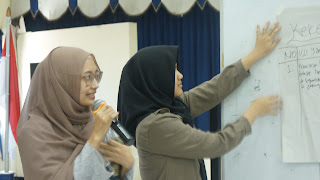What is sexual harassment?
Sexual harassment refers to unwelcome sexual advances, requests for sexual favors, or other verbal, non-verbal, or physical conduct of a sexual nature that creates a hostile, intimidating, or offensive environment. It can occur in various settings, including workplaces, educational institutions, public spaces, and online platforms. Sexual harassment is a form of gender-based violence and is a violation of human rights. The forms of sexual violence: 1. Showing or exposing genitals intentionally. 2. Sending messages, jokes, or whistles with sexual connotations to the victim. 3. Sending sexually explicit messages, jokes, images, photos, audio, or videos to the victim. 4. Imposing punishments or sanctions with sexual undertones. 5. Uploading sexually suggestive photos or personal information of the victim. 6. Taking, recording, or distributing sexually suggestive photos, audio, or visual recordings of the victim. 7. Persuading, promising, or offering something to the victim for engaging in sexual transactions or activities. 8. Peeping or intentionally observing the victim engaging in private activities or in private spaces . These forms of sexual violence are collectively referred to as Online Child Sexual Exploitation and Abuse (OCSEA). Online Child Sexual Exploitation and Abuse (OCSEA) refers to a disturbing and illegal activity that involves the sexual exploitation and abuse of minors through online platforms and digital technology. This may include various forms of harm and exploitation, such as: 1. Grooming : The process in which an adult forms a connection with a child online with the intent to exploit and sexually abuse them. This can involve building trust, manipulation, and coercion. 2. Sexting : The sharing of sexually explicit messages, photos, or videos involving minors, sometimes voluntarily but often coerced. 3. Sextortion : form of online exploitation and blackmail in which an individual, often using sexually explicit material (such as images or videos), coerces and manipulates another person to engage in certain behaviors or actions against their will. 4. Live stream : The use of live video streaming to broadcast sexual abuse and exploitation of minors to a remote audience. 5. CSAM : CSAM stands for "Child Sexual Abuse Material." It refers to any form of media, including images, videos, or other digital content, that depicts or involves minors engaged in sexually explicit or abusive activities. 6. Cyberbullying : Cyberbullying is a form of bullying that takes place in the digital realm, primarily through electronic devices and online platforms. The preventive actions Education and awareness: Conducting education and awareness programs in educational institutions to strengthen character education and raise awareness about sexual violence. Creating safe and disability-friendly environments: Ensuring the availability of safe and disability-friendly facilities and infrastructure. Providing complaint channels: Establishing complaint channels for victims to report incidents of sexual violence. Providing support and counseling services: Offering support and counseling services to victims of sexual violence. Strengthening governance: Implementing effective governance measures to prevent sexual violence, such as the development of codes of practice and policies. Empowering individuals and groups: Encouraging individuals and groups to become agents of change by reporting incidents, providing ideas, and taking responsibility for preventing sexual violence. Promoting responsible digital use: Promoting responsible digital use and addressing power imbalances between adults and young people in online interactions. Creating a culture of non-violence: Establishing rules and programs that promote non-violence in educational settings. Establishing prevention and response teams: Forming prevention and response teams to address sexual violence incidents. Inclusive and comprehensive sexual education: Providing inclusive and comprehensive sexual education to empower individuals and promote healthy relationships . Citations: Permendikbudristek PPKSP Pasal 14-23 Draf Buku Panduan 2P UNICEF Indonesia UNICEF Indonesia Edukasi Seksual Cristina Setianingrum, Mitra Muda UNICEF Indonesia. United Nations. (2019). Ending Sexual Harassment: An ILO Code of Practice. Retrieved from https://www.ilo.org/wcmsp5/groups/public/---ed_protect/---protrav/---ilo_aids/documents/publication/wcms_712761.pdf Forum Group Discussion Session In this session, we have a group discussion about a specific prompt. The group is consist of 5-6 members. Here is a glimpse of the session: Preparation & Discussion (15 minutes) Presenting Presenting (2) |





Comments
Post a Comment